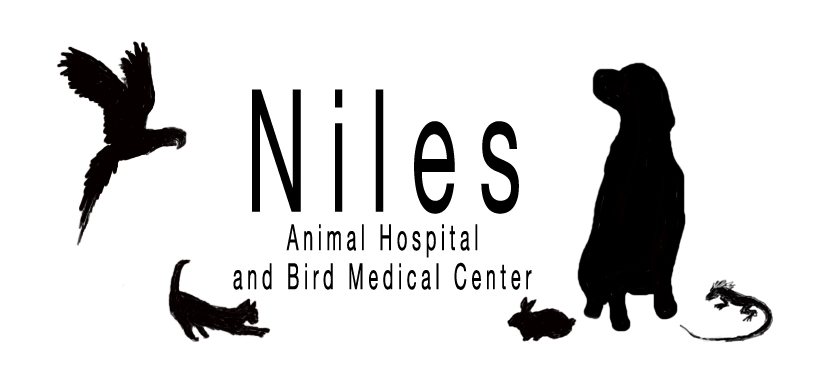From an article posted on the AVMA Pet Health SmartBrief.
Although not animal related per se this article should be brought to everyone’s attention. Granted, research is essential to help determine causes and cures of diseases, but in out tumultuous, uncertain times, with the significant risk of bioterrorism, we could be at risk if certain projects are not kept secured.
A Most Dangerous Race
A likely culprit: the much talked about H5N1 avian flu virus, among the deadliest known in percentage of victims it kills. It has so far been spread almost entirely by direct contact of a person — usually a poultry worker in Asia — with infected chickens or ducks. But what if it were airborne-transmissible from person to person? Imagine the devastation if a tourist could catch it from an infected poultry worker and spread it by a cough or a sneeze among fellow travelers who would all carry it home. Such an outbreak could lead to that unimaginable pandemic.
Making the H5N1 virus transmissible from person to person is precisely the goal of such research, which could be stepped up sharply as soon as the NIH establishes rules governing such experiments for its own grantees.
But the dangerous race is already on. A lab in Germany is trying to make canine distemper virus contagious between humans. Once again the rationale is to understand how that might occur in nature. Why risk a laboratory-caused outbreak of virulent, human contagious distemper? And a lab in China reported making combination of H5N1 bird flu and human H1N1 viruses contagious in guinea pigs, again with the goal of creating human contagion. Should we try to make any and all animal viruses contagious in humans simply to learn how it can be done?
In 2009, the pandemic caused by H1N1 flu virus infected one in every four people in the world but killed very few. What if its fatality rate had been 50 percent to 60 percent — the current death rate for workers directly infected by birds with the H5N1 virus? The 40 million dead from the 1918 virus could become hundreds of millions killed by an accidental laboratory release of such an engineered avian virus.
The CDC’s own data indicate that such an outcome is likely enough to create an urgent demand to stop this kind of research. Our calculations from data the center published in its 2013 report on theft, loss and release of pathogens and toxins suggest that for two dozen labs working with human-transmissible H5N1 viruses, there would be a 50-50 chance of a release in just 30 years. However, if live SARS virus research can be taken as a guide, more than 100 labs could end up researching human-transmissible avian flu. It would then take a mere seven years for that 50-50 chance of a release by one of them.
What are the chances of a pandemic resulting from such a release? Victims infected with influenza viruses typically become contagious in one to three days. This rapid onset of contagion after becoming infected is a major reason why influenza outbreaks are difficult to control through quarantine. It is not hard to believe that as few as one in 10 to one in 100 lab releases could result in a pandemic.
That a lab release occurring in seven to 30 years could seed a pandemic with hundreds of millions of deaths is an intolerable risk, and we have been considering only accidental release. The likelihood gets worse if one also considers deliberate release by a deranged lab worker — as occurred in the 2001 anthrax mailings — by terrorists or by hostile nations.
In our commentary to this post, “The Human Fatality Burden of Mammalian-transmissible Bird Flu Research,” we calculate that each lab developing human-contagious H5N1 bird flu could carry with it the possibility of causing 50 to 5,000 deaths per year if they are successful. To put these numbers in perspective, no Institutional Review Board tasked with assessing human-subjects research would approve a proposal with fatalities estimated at 50 to 5,000 per year.
Whatever number we are gambling with, it is clearly far too high a risk to human lives around the world — and to do so for very little scientific return. There is no persuasive evidence that H5N1 in nature is creeping toward being contagious in humans on its own.
This research must be stopped completely. Its practical benefits range from unclear to absent, and its risk is staggeringly high.
The United States should take the lead in starting discussions toward an international agreement requiring the strictest oversight and highest biosafety level for research on other potentially highly contagious and lethal pathogens. Failure to act would offer tacit permission for the entire world to carry out such research without regard to consequences. That can only lead us ever farther down a most dangerous path and a never ending gamble with all of our lives.
Lynn C. Klotz, Ph.D, and Edward J. Sylvester are the authors of Breeding Bio Insecurity: How U.S. Biodefense is Exporting Fear, Globalizing Risk, and Making Us All Less Secure, University of Chicago Press, 2009. They post articles on biological security here and on their blog Breeding Bio Security. Klotz is Senior Science Fellow, the Center for Arms Control and Non Proliferation. Sylvester is a science writer and Director of the Cronkite Program in Science and Medical Writing in the Walter Cronkite School of Journalism and Mass Communication at Arizona State University.
